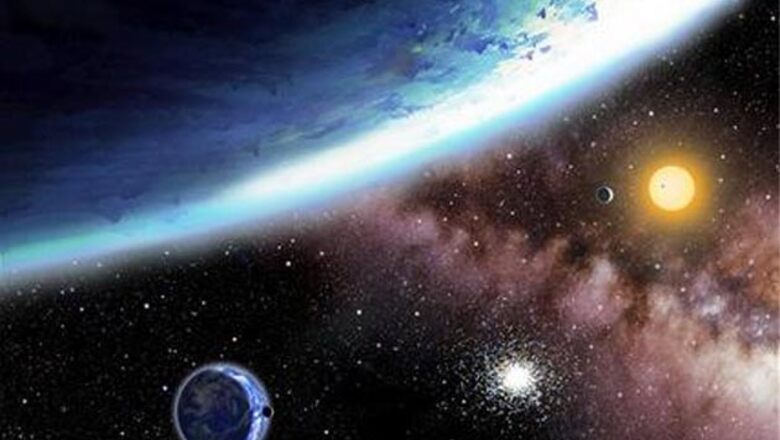
views
Washington: NASA's planet-hunting telescope has discovered two planets that seem like ideal places for some sort of life to flourish. And they are just the right size and in just the right place.
One is toasty, the other nippy.
The distant duo are the best candidates for habitable planets that astronomers have found so far, said William Borucki, the chief scientist for NASA's Kepler telescope. And it's got astronomers thinking that similar planets that are just about right for life - "Goldilocks planets" - might be common in the universe.
The discoveries, published online Thursday in the journal Science, mark a milestone in the search for planets where life could exist. In the four years that Kepler has been trailing Earth's orbit, the telescope has found 122 exoplanets - planets outside our solar system.
In the past, those planets haven't fit all the criteria that would make them right for life of any kind from microbes to man.
Many planets aren't in the habitable zone - where it's not too hot and not too cold for liquid water. And until now, the few found in that ideal zone, were just too big. Those are likely to be gas balls like Neptune and that's not suitable for life.
Similarly, any Earth-size planets weren't in the right place near their stars, Borucki said.
In the Goldilocks game of looking for other planets like ours, the new discoveries, called Kepler-62-e and Kepler-62-f are just right. And they are fraternal twins. They circle the same star, an orange dwarf, and are next to each other - closer together than Earth and its neighbor Mars.
The planets are slightly wider than Earth, but not too big. Kepler-62-e is a bit balmy, like a Hawaiian world and Kepler-62-f is a bit frosty, more Alaskan, Borucki said.
The pair is 1,200 light-years away; a light-year is almost 6 trillion miles.
"This is the first one where I'm thinking `Huh, Kepler-62-f really might have life on it'," said study co-author David Charbonneau of Harvard. "This is a very important barrier that's been crossed. Why wouldn't it have life?"
To make it warm enough for life the planet would need greenhouse gas trapping its star's heat because the star only gives off one-fifth the energy of our sun, but that's something that is likely to happen, Borucki said.
Both planets are tantalizing. The dozens of researchers who co-authored the study disagree on which one is better suited to life. Lisa Kaltenegger of the Max Planck Institute of Astronomy in Germany likes Kepler-62-e more because it's closer to the star and is warmer. She said it is probably "like Washington in May."
That planet is so close it may need clouds to cool off and it's more likely to be an all-water world, unlike any other in our solar system, Kaltenegger said. Astronomers cannot confirm that either planet has water, but based on other research, it's a good assumption, she said.
The planets circle a star that is 7 billion years old - about 2.5 billion years older than our sun. Kepler spots the planets as they go between Earth and their star ever so slightly, reducing the light from the star.
"If there's life at all on those planets, it must be very advanced" evolutionarily because the planets are so old, said Borucki.
On a watery planet, oceans are prime spots for life, including flying fish that could evolve into birds, Borucki said. And on the rocky planet, with a heavier gravity than Earth, life might look a tad different, he said.
In another study also published by some of the same authors in Astrophysical Journal, the astronomers found a different set of planets that are slightly bigger, but probably not gas giants, and circle a star that more resembles our sun. One of those planets is on edge of the habitable zone - maybe in, maybe out - and could be considered a potential third good place for a habitable zone, said Thomas Barclay of NASA's Ames Research Center, which runs the Kepler telescope.
All told, researchers announced seven new exoplanets on Thursday, upping the grand total found so far by Kepler and Earth-bound telescopes to about 850, according to NASA.
Pennsylvania State University professor James Kasting called the findings "a big discovery." Kasting and Sara Seager of MIT, who weren't part of the research, pointed out that Kepler's job is to look at one distant corner of the sky and to find what fraction of stars seemed to have the right sized planets in the habitable zone.
"This is HUGE," Seager wrote in an email. "Do you realize that as soon as Kepler could find close-to-Earth-size planets in the habitable zone of sun-like stars, Kepler found it. Goldilocks planets must be everywhere."



















Comments
0 comment